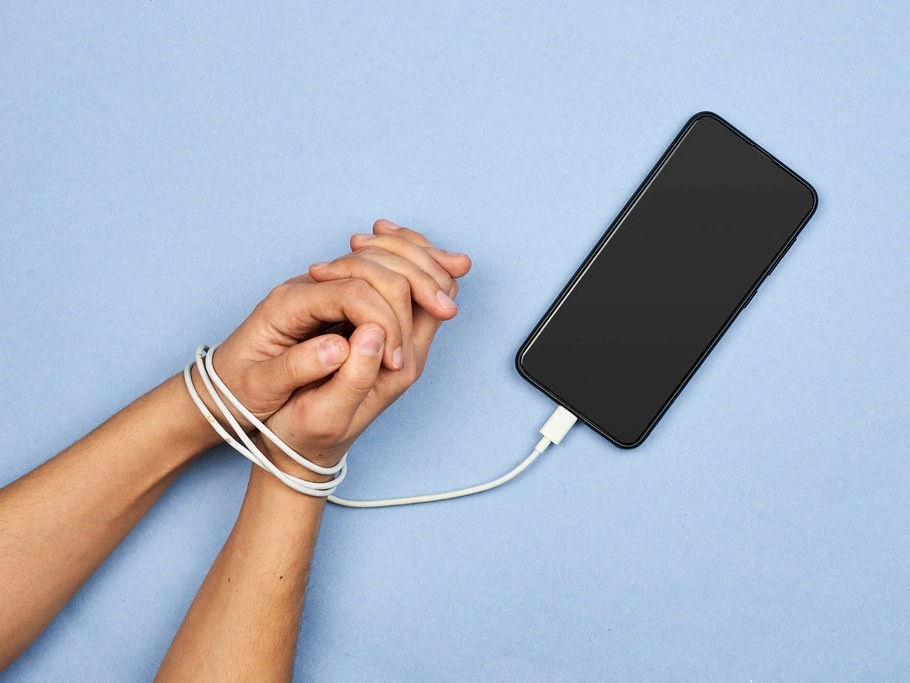In today’s digital world, it’s no surprise that we spend a significant portion of our time glued to screens. Whether it’s checking social media, watching videos, or responding to endless notifications, our digital devices dominate our daily routines. But while technology keeps us connected, it can also pull us away from deeper, more meaningful connections—especially with God.
In the midst of this shallow digital culture, how can we develop a faith that goes beyond the surface? How do we stay grounded in our spiritual lives while being constantly surrounded by digital distractions?
The Problem of Digital Distractions
Research shows that the average person spends over seven hours a day consuming digital media. For many of us, this time is filled with a steady stream of social media updates, entertainment, and news. But beyond the immediate satisfaction of scrolling or watching, there’s a hidden cost: our ability to focus, reflect, and connect with God diminishes.
A survey by the Barna Group revealed that 33% of Christians admit that their digital habits have negatively affected their faith. It’s no wonder we often feel spiritually drained after a day filled with endless notifications, shallow content, and fragmented attention.
Screen Stewardship: A Balanced Approach
The solution isn’t to completely unplug from the digital world. Instead, we need to learn “screen stewardship”—the practice of using technology wisely and in a way that aligns with our faith. It’s about being intentional with our digital time, setting healthy boundaries, and using our screens to support our spiritual journey rather than distract from it.
Just as we manage our time and resources in other areas of life, we need to be mindful of how our screen time impacts our faith. It’s not about avoiding technology altogether but about using it in ways that help us grow spiritually.
The Power of What We See and Hear
What we focus on, we become. This timeless principle is found in scripture, where we see that sustained exposure to certain content can shape our hearts and minds. For example, in Genesis 30:25-43, Jacob uses visual cues to influence the breeding of his flock. In a similar way, what we consistently set our eyes on—whether it’s uplifting or negative—can mold our values and attitudes.
In today’s digital age, this truth is more relevant than ever. The images we see, the videos we watch, and the conversations we listen to can either pull us toward God or push us away from Him. By being mindful of what we consume digitally, we can protect our hearts and minds, allowing our faith to grow.
The Challenge of Fragmented Focus
With the rise of social media and constant digital engagement, many of us struggle with what’s called “dispersed consciousness”. This describes the fragmented attention caused by juggling multiple notifications, apps, and platforms. We are always connected, yet often feel scattered and unable to focus on what truly matters—including our relationship with God.
When our attention is constantly divided, it becomes harder to engage in meaningful prayer, reflection, or scripture study. We may even find ourselves becoming spiritually numb, unable to hear God’s voice amidst the digital noise. The challenge is to create space for stillness and focus, setting aside time to reconnect with God away from the distractions of screens.
Restoring Empathy and Connection
Another consequence of our digital age is the loss of genuine connection. While technology enables us to stay in touch with people across the globe, it often replaces face-to-face interactions with quick, shallow exchanges. This loss of real connection can diminish our ability to empathize with others and engage in meaningful relationships.
Jesus calls us to love our neighbors as ourselves (Matthew 22:39), which requires personal engagement and authentic relationships. To foster true empathy and connection, we must prioritize in-person interactions, be present in our conversations, and take time to listen to others fully. It’s through these deeper connections that we can reflect Christ’s love to those around us.
Practical Steps for Healthy Digital Habits
If you’re looking to find balance in your digital life while nurturing your faith, here are a few practical steps you can take:
- Acknowledge the Impact: Start by recognizing how your digital habits affect your spiritual growth. Reflect on how much time you spend on screens and whether that time aligns with your values.
- Set Boundaries: Establish limits on when and how you use technology. For example, create screen-free times during the day, especially during moments set aside for prayer, reflection, or spending time with loved ones.
- Be Accountable: Share your screen time goals with a friend or mentor who can help you stay on track and encourage you to maintain a healthy balance.
- Prioritize Real Connections: Make an effort to engage in face-to-face interactions and deepen your relationships with those around you. Don’t let online interactions replace the value of real-life conversations.
Conclusion: Going Beyond the Screen
Living in a digital world doesn’t mean we have to lose touch with our faith. By practicing screen stewardship, setting healthy boundaries, and being mindful of what we consume, we can use technology in ways that enrich our spiritual lives. Let’s reclaim our focus, deepen our faith, and use the tools around us to connect more meaningfully with God and others.
As we navigate this digital culture, remember that it’s not about avoiding screens altogether but about finding balance—allowing our faith to flourish beyond the shallow distractions of the online world.






